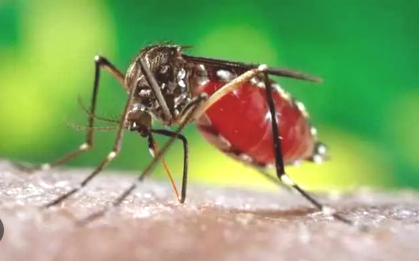Roughly half the world’s population lives in areas vulnerable to dengue fever, a potentially life-threatening viral infection transmitted through the bites of infected mosquitoes. There is no treatment, and only people who have already had dengue fever are eligible for the vaccine. In this expert alert, Stacey Rizza, M.D., an infectious diseases specialist at Mayo Clinic in Rochester, Minnesota, shares important information to know about dengue.
The global incidence of dengue fever is rising, according to the World Health Organization. In WHO’s Eastern Mediterranean region, countries with outbreaks last year included Egypt, Saudi Arabia, Oman, Afghanistan, Djibouti, Pakistan, Somalia, Sudan and Yemen.
The Americas region had a record of more than 4.2 million new cases last year, led by Brazil with 2.9 million; Peru, 271,279; and Mexico, 244,511, Pan American Health Organization data shows. The region had 6,766 serious cases – led by Colombia with 1,504; Brazil, 1,474; and Mexico, 1,316 – and 2,050 deaths, according to PAHO. Only Canada is free of the disease and the mosquito that carries it, WHO says.
“Four different subtypes of the virus can cause infections in humans,” says Dr. Rizza, Mayo Clinic executive medical director of the Asia-Pacific region. “Wherever you have a significant number of mosquitoes and warm hot environments is where you see dengue transmission.”
People living in hot, humid tropical and subtropical areas are particularly vulnerable to dengue fever.
“That’s why you see it in parts of the world such as Southeast Asia, South America, the Caribbean, and even some parts of the southern United States, around Florida and Louisiana,” Dr. Rizza says.
People can have dengue fever more than once. The primary transmitter of dengue fever is the Aedes aegypti mosquito, known to bite day and night. About 1 in 4 people infected with the virus will experience symptoms ranging from mild to severe.
“They usually notice fevers, body aches, bone aches, muscle aches. Many times, they even describe an aching behind their eyes,” Dr. Rizza says. “They can get some nausea, vomiting and even diarrhea.”
While most people recover within about a week, severe cases can lead to life-threatening emergencies.
Symptoms of severe dengue fever may include:
- Severe stomach pain.
- Persistent vomiting.
- Bleeding from your gums or nose.
- Blood in your urine, stool or vomit.
- Bleeding under the skin, which might look like bruising.
- Difficult or rapid breathing.
- Irritability or restlessness.
Unfortunately, there is no treatment for dengue fever.
“There’s no antiviral or no treatment for dengue fever,” Dr. Rizza says. “It’s what we call supportive therapy. Maintaining good hydration, particularly as people are sick and having fevers, is important. They can use acetaminophen to take care of the fevers, bring down the temperature, and then ensure they take in fluids and still get some form of eating.”
“If they become severely ill and dehydrated, they should go to their hospital and may require hospitalization to help support them,” Dr. Rizza says. People with severe dengue fever may need intravenous fluids and electrolytes, blood pressure monitoring and transfusion to replace lost blood.
A vaccine is approved in many countries for children ages 9-16 who have previously shown evidence of dengue infection.
“You give it to people who have already had immunologic evidence of a previous dengue infection, and then you give it to them to help prevent them from becoming reinfected,” she says. The vaccine isn’t approved in the United States.
Preventing mosquito bites is vital to avoiding dengue fever, Dr. Rizza says:
- Use bug spray with DEET, picaridin or oil of lemon eucalyptus to prevent mosquito bites.
- Remove any stagnant water where mosquitoes can lay eggs.
- Eliminate items that hold water, such as vases and flowerpot saucers.
- Ensure intact window screens and closed doors to keep mosquitoes outside.
- Wear protective clothing such as pants and shirts with long sleeves.
The Aedes aegypti mosquito is responsible for several viral infections, including dengue fever, yellow fever, chikungunya and Zika.




